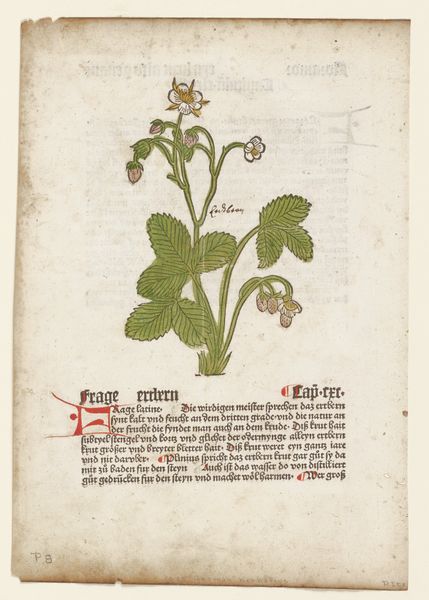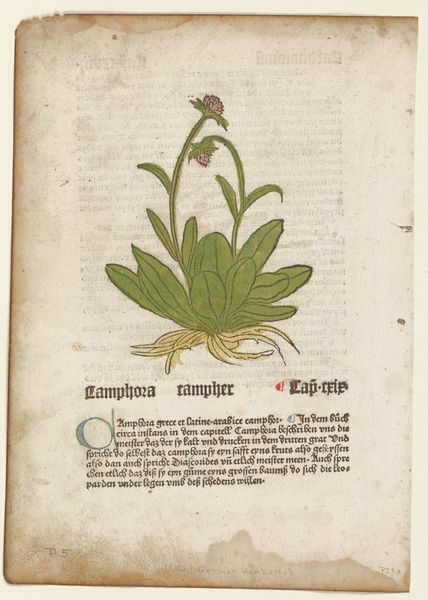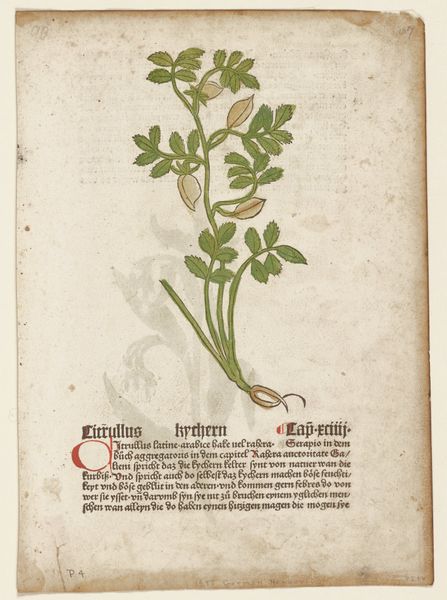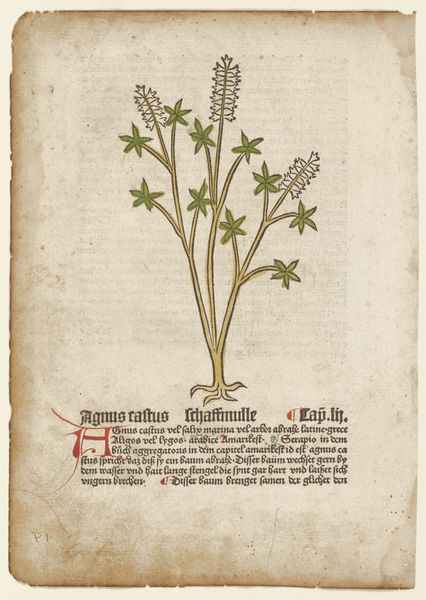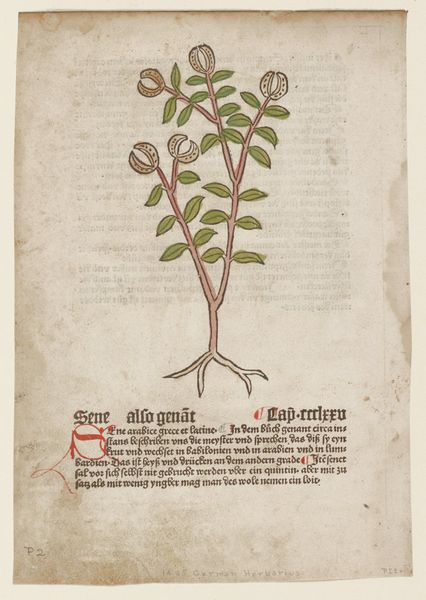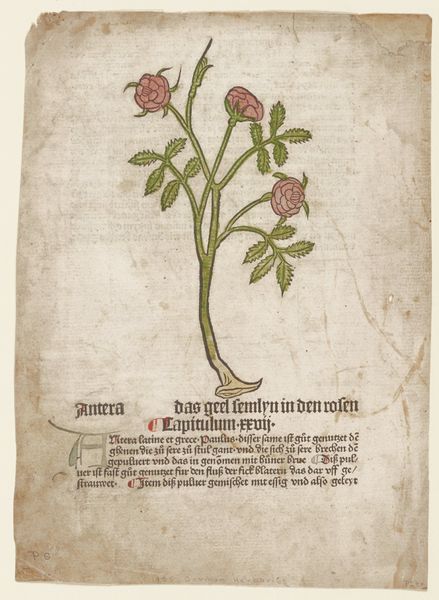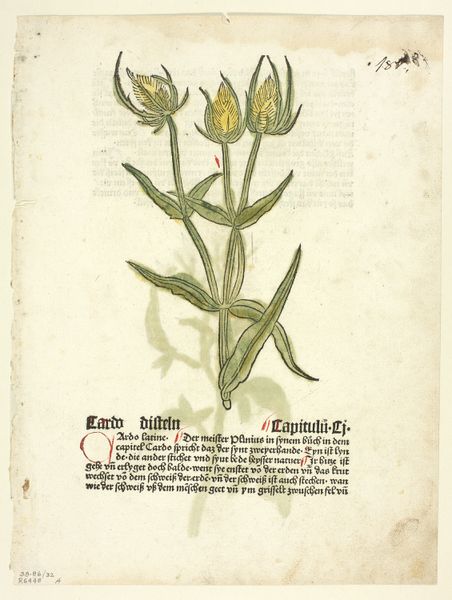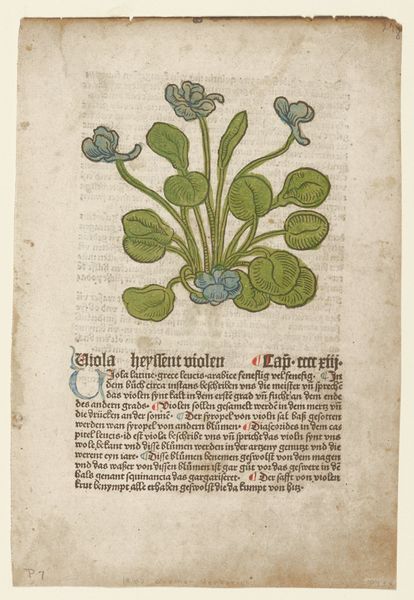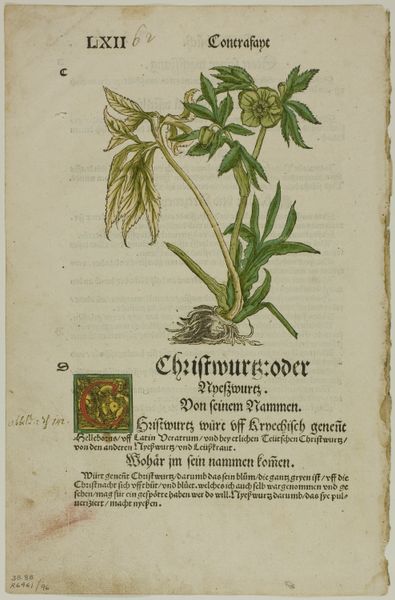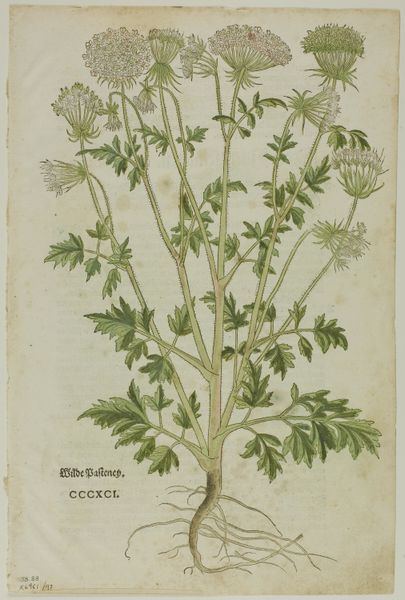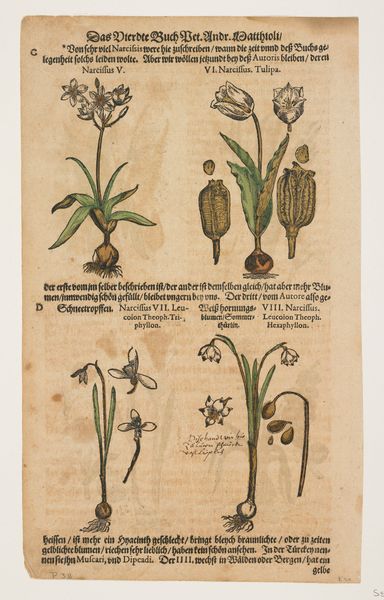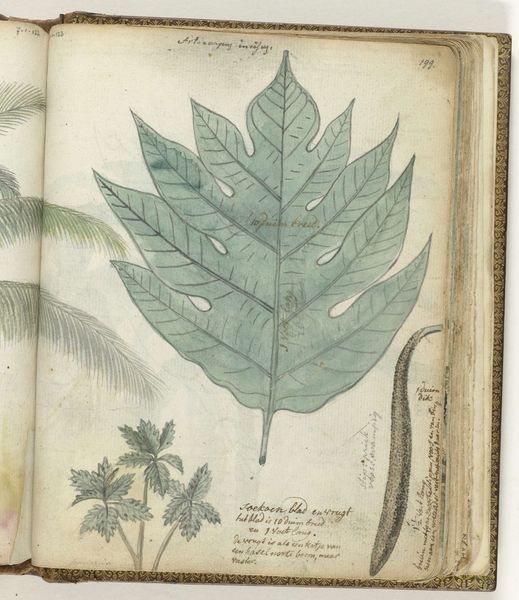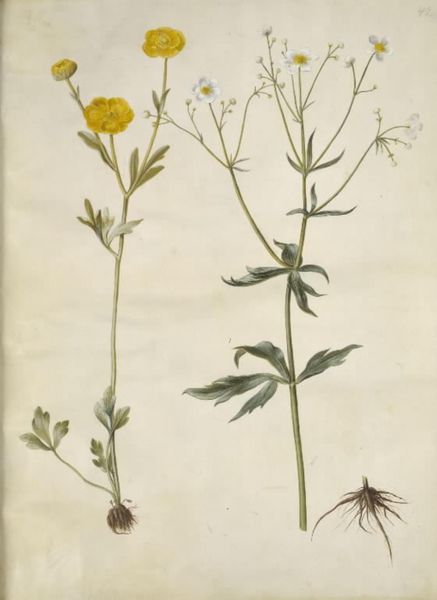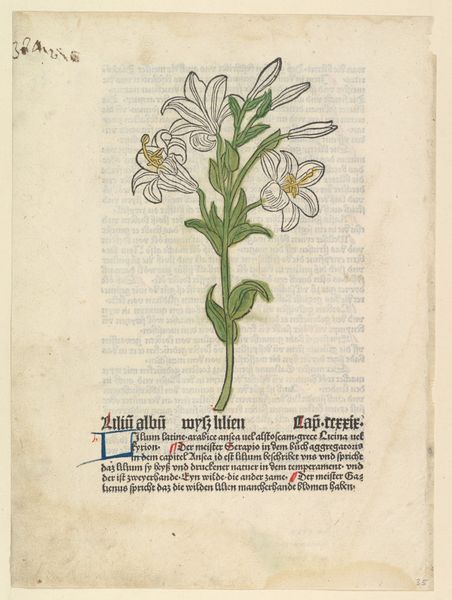
drawing, print, paper, ink
#
drawing
#
medieval
# print
#
paper
#
ink
#
watercolour illustration
#
genre-painting
#
northern-renaissance
#
academic-art
#
miniature
Dimensions: 8 1/2 x 5 in. (21.59 x 12.7 cm) (image)
Copyright: Public Domain
Curator: Here we have "Virga Pastoris," a print from 1485 attributed to Johannes de Cuba. It’s done with ink on paper and has these delicate watercolour illustrations of a plant. Editor: My first thought? It feels incredibly contained, almost like a specimen carefully documented. The limited palette makes it seem both scientific and strangely precious. Curator: Precisely! Look closely at the plant itself. In Christian iconography, certain plants carried heavy symbolism. What do you see here? Does this particular specimen evoke anything? Editor: Well, with those spiky features, and given the historical context, it’s hard not to see a crown of thorns. The “virga pastoris” translates to “shepherd's rod," adding another layer, potentially associating Christ as the Good Shepherd. How does this botanical drawing function within the medical text it originally accompanied? Curator: Good question. These texts were vital for practical medicine, but I see so much more than practical utility here. Notice the painstaking details – almost a spiritual devotion through the very act of observation and recording. These details become a conduit to comprehending deeper truths. Editor: I see that, and the plant rendered almost frontally is significant, suggesting an attempt to capture some objective, timeless essence, a pursuit itself loaded with social assumptions about nature, knowledge, and control. Did the illustration, through the precise description, invite control of natural, uncontrollable phenomenon? Curator: Absolutely, and that brings us to the writing which has notes on this medicinal plant; in red ink, note the rubricated capitals signaling importance and perhaps spiritual or instructional meaning as well, guiding its interpretation within that pre-scientific worldview. Editor: So this image becomes a crucial link: a visual, symbolic bridge that allowed its audience to see a complex convergence of faith, natural science, medicine, and class… Wow, to really *see* this image transforms my understanding of medieval intellectual life. Curator: It has me, too, reconsidering how we separate “science” from “belief.” What stories did this plant carry, and for whom? It is exciting to imagine, isn't it?
Comments
No comments
Be the first to comment and join the conversation on the ultimate creative platform.
